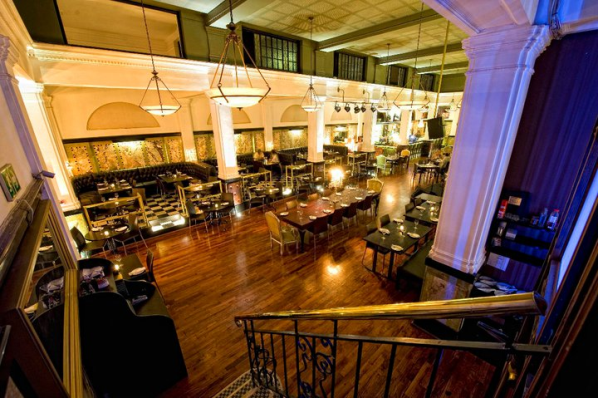Sometimes this feels like an obituary column. After sizing up a restaurant, eating there several times over a protracted period of time, just as one is poised to commit the review to paper, you receive news that the establishment has in the meantime gone under. This has happened to me several times in the past year.
Riboville was one such a place, and on the surface at least, it had everything going for it. Set in a magnificent, historical building dating from 1893, which was once a bank, its splendid interior stretched from Adderley Street to St George’s Mall. The marble, the soaring ceilings, the chandeliers and ornate plasterwork, more creditworthy in a city such as New York, effortlessly transported one to some great, early 20th Century interior. The investment the owners made, which included major renovations, the biggest restaurant wine cellar in the country, and the creation of numerous venues upstairs, was staggering. But, in what has become a notorious story, the business closed its doors without warning; apparently, though I could not verify it, some of the waiters were informed in mid-shift that they were already out of a job.
Well-known restaurateurs Lauren Maas and Eyal (Skippy) Shaked are now trying their hand. An attempt has been made to make the space less cavernous. The interior plants and palm trees are gone; there’s a split level; a red curtain now cordons off the far wing. But the space really wasn’t the problem, if anything it is a major asset and should be left alone; the impressive dimensions immediately win patrons over. What is required is someone to come up with a strong enough concept to attract enough diners.
On several occasions, while eating at the almost always empty Riboville, it occurred to me that a big band would perhaps work, and that it should open for breakfasts catering to the CBD crowd. This kind of space could stay open 18 hours a day, providing a steady trickle of clients with anything from coffee and cake to cocktails and meals. All the place needs is life.
There is now a stage with a grand piano and music three nights a week (Wednesdays and weekends). The jazzy Brio Trio were up the first time I dined here and they struck just the right tone. Offering dinner dance and having the room in which to do it, makes Brio a distinct dining experience.
Several of our more successful restaurants do comfort food, squarish meals and homey classics, confidently proffered at prices in the upper-middle range. The retro Brio menu harks back to old classics, before the nanny state, before we became so health conscious, before there was a daily medical or statistical survey to spoil the fun.
Chef Ronelle Mesias, formerly sous chef at The Showroom, certainly enjoys the old South African idea of haute cuisine – that sort of Camps Bay cordon bleu cooking.
When did you last have Roquefort snails (R59) or deep fried camembert (R62) for starters? I chickened out and went for the grilled calamari (R49), which was faultless – soft, buttery and lemony. I also ordered the old South African idea of a Greek salad (R52), meaning it’s prepared with lettuce.
The beautifully tender peppered fillet (R130), pan fried with brandy and cream, has become their signature dish, and also highly recommendable is their whole, baby chicken (R149) roasted with thyme and lemon.
Among the classics is crayfish thermidor (R249). One is quickly reminded why you seldom see this French inspired dish nowadays. The recipe requires far too many finessed steps. If the stock isn’t sufficiently potent you end up with a delicate crayfish tail ruined by a reactionary cocktail of mushroom-filled Hollandaise sauce covered in a separating crust of melted cheese (it wasn’t parmesan or Gruyere). The essential trace of mustard was missing too.
Then there’s the carpetbagger (R106). It takes courage to order a large, aged sirloin that is used as a sandwich for mussels in a creamy garlic sauce with cheddar on top. Though popularised by the Australians, the dish is as the name suggests invented in North America around the time of the civil war. Oysters, not mussels, were used then. The menu states fresh mussels, but I’m convinced they were tinned, smoked mussels the night I tried it.
The crème brûlée (R39) is in keeping with the old South African manner – thick and heavy and presented in that rather naive style that once impressed long ago – three blobs of piped cream and a dissected strawberry.
I hope with the snappy music, the few retro choices (strictly for fun methinks), and a few more dependable comfort items on the menu, this stunning venue will at last realise its potential.
Brio 1893, ABC Building, 130 Adderley Street, Cape Town. Tel: 021-4220654.

